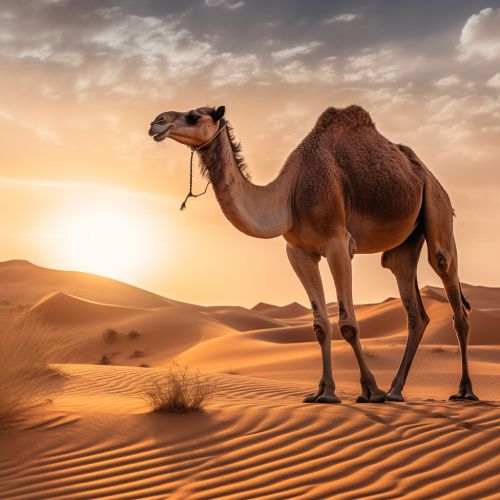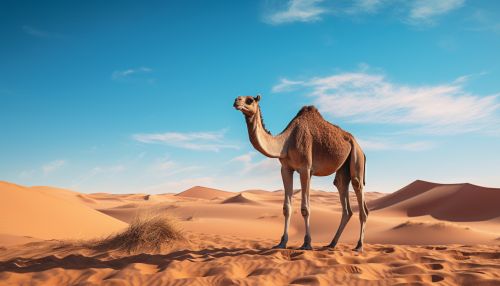Camel
Taxonomy and Evolution
Camels belong to the family Camelidae, which also includes llamas and alpacas. The two main species of camels are the dromedary (Camelus dromedarius), which has one hump, and the Bactrian (Camelus bactrianus), which has two humps. The dromedary is native to the dry desert areas of West Asia, while the Bactrian camel is native to Central and East Asia.
Camels evolved in North America around 40 million years ago during the Eocene period. They migrated to Asia via the Bering land bridge around 3 million years ago. The last of the North American camels disappeared around 10,000 years ago, likely due to a combination of climate change and overhunting by humans.


Anatomy and Physiology
Camels are large, robust animals with a unique set of physiological adaptations that allow them to survive in harsh desert environments. These include a hump or humps that store fat, which can be converted into water and energy when food and water are scarce, and long, slender legs that keep their body away from the hot desert surface.
Camels have a third, clear eyelid that protects their eyes from blowing sand. Their nostrils can close to prevent sand from entering. Their ears are also lined with protective hairs. Their thick coats insulate them from the intense heat radiated from the desert sand, and their broad, tough feet help them move across the sand without sinking.
Behavior and Ecology
Camels are social animals that live in groups called herds, which are usually led by a dominant male. They are able to withstand extreme temperature fluctuations, from freezing cold nights to scorching hot days, and can go without water for up to 10 days.
Camels are herbivores, feeding on a variety of plants in their desert habitat. They are able to consume parts of plants that are indigestible to other herbivores. This ability, combined with their capacity to derive water from their food, allows them to survive in areas where other animals cannot.
Domestication and Uses
Camels have been domesticated by humans for thousands of years, primarily for use as pack animals. They are able to carry heavy loads over long distances, making them invaluable for transportation in desert regions. In addition to their use for transport, camels also provide milk, meat, and wool.
Camels have also been used in warfare. In the past, they were often used as mounts in desert warfare, and their ability to travel long distances without water made them ideal for use in desert campaigns.
Conservation Status
While the dromedary camel is not currently considered to be at risk, the Bactrian camel is listed as critically endangered by the International Union for Conservation of Nature (IUCN). The main threats to Bactrian camels are habitat loss due to industrial development and mining, and hunting for their meat and hides.
